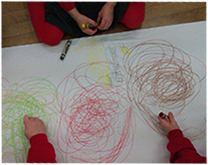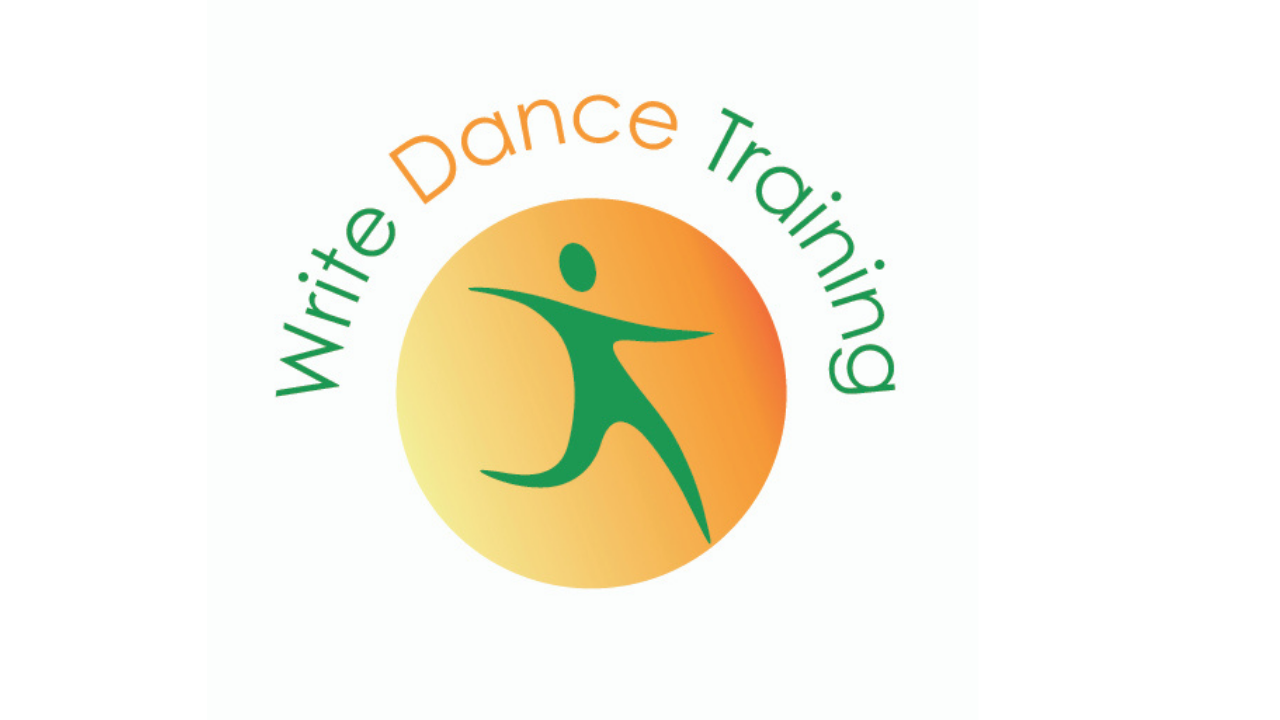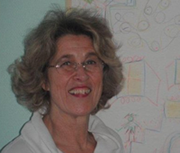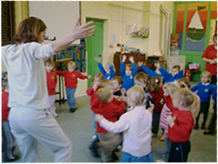A free selection of music and video clips from both books. Oussoren, Write Dance (Open Access)
Ragnhild Oussoren first developed the Write Dance approach when working as a graphologist in The Netherlands. She based the method on ‘writing psychology’ from France, which can be traced to the late 19th century as well as ‘writing-teaching’ from Germany that dates to back to the 1960s.
In the opening pages of the Write Dance book (purple), Ragnhild Oussoren pays tribute to the pioneers of graphology (psychology of handwriting combined with personality theory). Ragnhild has dedicated more than four decades to developing, and then sharing her work. She writes, In Write Dance we can monitor the entire development [of the child] in a relaxed and playful way that is not product focused.
The unique aspect of the approach is the use of music and dance. This combination of rhythmic and melodic pieces of music have been selected so children can respond to and learn specific movements for improved physical awareness. Children develop a sound rhythm. They develop physical skills such as balance, coordination, flexibility, and stamina. Children achieve flow and confidence because they can express their emotions through movement, drawing and writing.
Ragnhild writes, Dancing is moving to music, Write Dancing is writing movements to music. The success of Write Dance is wholly attributed to the enthusiasm of practitioners and teachers who share this resource and continue to spread the practice worldwide.
“Everything in Write Dance is Right”
Children’s individual expression, pace of learning and writing style are recognised within this approach. It is apparent that children’s confidence, motivation, and self-esteem can be seen to develop because as Ragnhild says, “Everything in Write Dance is right”.
The success of Write Dance is wholly attributed to the enthusiasm of practitioners and teachers who share this resource and continue to spread the practice worldwide.
The Write Dance Books and How Write Dance Works
The Write Dance books are now in their 3rd edition an come with access to a companion website where you can watch videos and download music.
The books have different stories/ themes which are used as a starting point for movement and mark making. The music and the dance are used to guide and aid children’s imagination and language development, so the pieces of music, with the corresponding movements, are structured into ‘narrative’ themes that can be developed as stories or these can be enjoyed as separate and ‘stand-alone’ sessions. 
Rhythm is closely linked to rhyme and children are encouraged to use their voices to describe the actions as they move and dance. Once children have learnt the movements for a theme, they can then repeat the movements with the music in their mark-making and create ‘movement drawings’ To begin with children use sensory mark making materials (e.g. shaving foam) before progressing to other mark making tools (e.g. chubby crayons, chalks, pencils).
By covering a range of whole-body movements and with lots of repetition and practice children develop the skills and confidence they need for handwriting (e.g. shoulder and core strength, flexible wrists, balance, and coordination).


